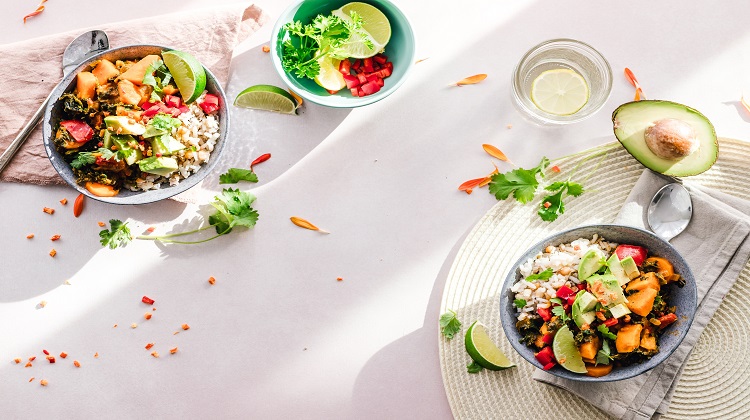
Introduction
Low-GI diets have been around for years and have been proven to help people lose weight and improve their overall health. The key is to learn how to calculate the glycemic index (GI) of foods you eat in order to choose healthier options that are low GI.
Learn How To Calculate Glycemic Index And Glycemic Load
Before you start a low-GI diet, it’s important to know the basics of calculating glycemic index and glycemic load. The glycemic index refers to the rate at which a particular food will raise blood sugar. Glycemic load is a measure of how much carbohydrate is in a serving of food, and how quickly it raises blood glucose levels.
The glycemic index ranges from 0-100; foods with a high GI (above 70) cause rapid rises in your blood sugar levels, while foods with a low GI (below 55) make for a slower release of energy into the bloodstream. This can help you avoid insulin spikes that are associated with diabetes or obesity.
The following chart shows some common foods that have either low or high GI ratings:
- Low: whole wheat pasta (35), oatmeal (50), lentils (28), sweet corn kernels (70), yams or potatoes baked without oil/butter (90).
- High: white rice flour/bread/pastries (>75), white bread /croissants/bagels (>70)
Eat Lots Of Vegetables
Vegetables have a low GI and are rich in fiber, vitamins, and minerals. They contain antioxidants that help reduce the risk of cancer and other diseases. You can eat them raw or cooked. However, it is recommended that you cook them for a short time only because excess cooking may destroy some of their nutrients.
Consume enough protein
Protein is the building block of our body. It helps to build and repair muscles, maintain your immune system, and keep skin, hair, and nails healthy. A protein like this plant protein can also help you lose weight and provide long-term health benefits.
Three servings a day are recommended for adults on a low GI diet, but how much protein should you be eating? The recommended daily allowance of protein for adults is 0.8 grams per kilogram of bodyweight (or approximately 0.36 grams per pound), with those over 70 needing a little less due to a reduced metabolic rate, so try not to go too crazy if you’re not used to it!
Choose rolled oat to stay full
Rolled oats like these bulk rolled oats are whole grain, usually served as breakfast cereal. They contain more fiber and protein than other cereals, making them a low-GI choice that helps you feel fuller for longer. They’re also high in iron, magnesium and zinc—all nutrients that play an important role in energy production.*
The only downside is that they take longer to digest than refined grains like white flour or white rice (which have been processed). For this reason alone, it’s best to save rolled oats for mornings after exercise when your body needs extra fuel because you’re more likely to get hungry again during the day!
Include A Serving Of Protein With Your Meal
There are many benefits to including a serving of protein with your meal. A high-protein diet can help you lose weight or maintain a healthy weight, as well as build muscle mass. Furthermore, protein has been shown to help curb the appetite and keep you feeling full longer than other macronutrients like fat and carbohydrates.
To make sure that your body gets the right amount of protein it needs each day, be sure to include at least one serving per meal or snack—and definitely make it the largest portion of your meal if possible!
Switch to sugar free dessert
Sugar-free desserts are a great way to improve your health and lose weight. The benefits of sugar-free desserts include:
- They contain fewer calories than regular desserts.
- They keep you feeling full for longer, which helps you prevent overeating and snacking in between meals.
- There are a variety of flavors, so you can enjoy both sweet and savory treats such as cakes, cookies, pies, muffins and fructose free dessert in your diet plan without having to sacrifice taste! If you’re looking for more options on how to make low-sugar desserts at home.
Avoid Fruits That Have A High GI Rating
Fruits that have a high GI rating and are high in sugar content:
- Apples (Golden Delicious)
- Apricots (dried)
- Avocados (flesh)
- Bananas (ripe, brown spots)
- Cherries (sweet, canned in heavy syrup or juice)
Eat Whole Grains
Whole grains are rich in fiber and vitamins, which help maintain a healthy digestive system. Examples of whole grains include brown rice, oatmeal, quinoa, and buckwheat. These foods provide energy to your body while keeping you feeling full for longer periods of time.
When you’re starting out on a low-GI diet, make sure to add more whole grains into your meals to keep them balanced. This will help reduce sugar levels in the blood while providing important nutrients that give the body energy throughout the day!
Take small steps towards a more healthy lifestyle.
If you’re not used to eating this way, it can be quite a change. So rather than trying to do everything at once (and possibly failing), try making small changes that are more manageable. For example:
- Start by drinking water instead of soft drinks
- Swap out white bread for whole grain alternatives like rye or pumpernickel
- Avoid processed meats such as ham and bacon
Conclusion
It can be hard to start a low-GI diet, but it’s worth it. You will feel better, have more energy, and have fewer cravings throughout the day. With these simple tips, you can begin your journey towards a healthier lifestyle!




